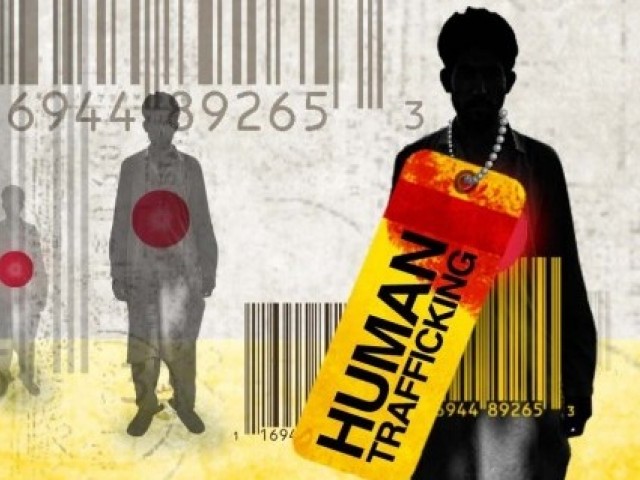
by: Judy Hale Reed, Staff Writer
I freed a thousand slaves. I could have freed a thousand more if only they knew they were slaves. ~ Harriet Tubman
Human trafficking is slavery, and slavery continues in the U.S. We have it in the North as well as the South, and the West. We have it in Pittsburgh and Allegheny County. U.S. federal law passed in 2000 defines “slavery” as the movement of persons for purposes of exploitation involving elements for force, fraud, or coercion. In 2006, the Pennsylvania legislature added “human trafficking” to the criminal code (18 Pa.C.S.A. § 3002 et seq., § 2906 et seq. (West 2013)). Gregg Warner, Counsel to Senate Judiciary Committee under Pennsylvania Senator Greenleaf, notes that Pennsylvania ranks ninth for the highest numbers of calls to the National Human Trafficking Resource Center (1-888-373-7888); receiving 461 calls in 2012 for assistance in six languages. Calls ranged from crisis calls from potential victims of trafficking, to concerned community members. Sixty-two of those calls were from the Pittsburgh area, including calls for general information.
The U.S. Department of State estimates that 27 million people live in slavery at any one moment in time, including victims within the U.S. According to the Joint State Government Commission’s Advisory Committee on Human Trafficking 2012 report, “Human Trafficking in Pennsylvania: Policy Recommendations and Propose Legislation,” Pennsylvania is both a pass-through state and a destination for exploitation. The University of Michigan School of Law Human Trafficking Database of filed cases provides examples of trafficking in or through Pennsylvania, and demonstrates an array of exploitation in the Commonwealth: forced prostitution of adults and minors in brothels, massage parlors, and streets; in hair and nail salons, restaurants, and bars; and child sex tourism by Pennsylvanians.
Dr. Mary Burke, Director of the Project to End Human Trafficking at Carlow University and a member of the Joint State Government Commission’s Advisory Committee, added to this list. “Unprosecuted cases also include domestic servitude and agricultural exploitation,” Burke explained, “and any prostitution or sex-related exploitation of a minor is human trafficking, because minors cannot consent.” She pointed out that these are only the types of victims who have been identified, “because we cannot count the ones we have not yet found. Unlike merchandise, humans can be sold repeatedly, for different purposes.” She also explained that victims are sometimes forced, through manipulation and threats, to lie to people who might be able to help them, and that some victims are moved around to keep them under control. Warner noted that traffickers round up runaway girls from the Toledo, Ohio area and bring them to truck stops on I-80 to force them into prostitution.
Dr. Burke points out that “victims who have been identified and assisted in southwestern Pennsylvania include U.S. citizens as well as people who came to the U.S. for work or for study. Foreign-national victims came both legally and without legal documents. Some noncitizens paid high prices for legal documents that they never received.” Dr. Burke explained, “trafficking is very different from smuggling; someone may think they are being smuggled and then become trafficked by their smugglers or other people.” The U.S. Department of State Trafficking in Persons website explains that smuggling is a crime against the state, where the crime is the illegal crossing of a border, whereas human trafficking is a crime against a person, involving force, fraud, and/or coercion to restrict the victim’s freedom of movement, and exploit a profit from the victims labor or services.
According to a federal Department of Health and Human Service report, “Identifying Victims of Human Trafficking: Inherent Challenges and Promising Strategies from the Field,” authors Heather J. Clawson and Nicole Dutch noted that the two biggest barriers to identifying the victims of slavery are that they are hard to identify due to “the hidden nature of the crime,” and that they often do not self-identify as victimized. Victims of trafficking may look like workers or neighbors. You can look at it this way: all work exists on a continuum from great jobs, to okay jobs, to bad jobs (who doesn’t have personal or second-hand experience of an awful boss or a crappy job?), to labor exploitation, to inescapable slavery. The distinguishing factor of human trafficking is that victims are forced to remain with their traffickers. Some are locked up physically, or kept in isolated homes or rural fields; others are coerced through violence, threats, or more complex manipulation, and may not self identify as victims.
Mr. Warner affirms this observation, and notes that some victims think that their trafficker is their boyfriend, who loves and helps them. A trafficker may treat victims better than they were treated at home. Clawson and Dutch compare some victims’ experiences with Stockholm Syndrome, where prisoners identify with their captors as their caretakers; “the victim not only does not see him/herself as a victim but they do not believe their trafficker has done anything wrong.” Mr. Warner adds that another challenge to identifying victims is the need for education and training for some law enforcement to be aware of trafficking so that they can correctly identify a victim, instead of charging him or her as a criminal.
What can we do, as citizens, employers, investors, and attorneys? Please visit the next two posts in their series to learn more.
This blog post is the first of a three-part series on human trafficking in Pennsylvania. The second and third parts will address anti-trafficking efforts in Pennsylvania.
Ms. Hale Reed is a 3L who has worked on anti-trafficking efforts at the community, state, and national level in the Washington state, Pennsylvania, and the Republic of Moldova. She is currently a certified legal intern in the Civil Rights Clinic at Duquesne University.